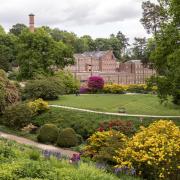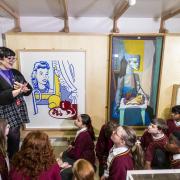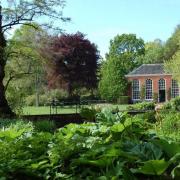Dante’s Dream, by Gabriel Charles Rossetti
Gabriel Charles Rossetti, as he was known as a young man, was a founder member of the pre-Raphaelite Brotherhood, a group of hot-headed young artists intent on shaking up the staid Victorian art world. They took inspiration from early Italian art, poetry and medieval imagery and focused on romantic rather than classical themes.
As a young man, Rossetti was so obsessed with the work of the Italian poet Dante Aligheri that he adopted his name. Rossetti painted with his heart not his head, the latent sensuality evident in his work, was driven by the numerous intimate relationships he had with his models. Dante’s Dream, a huge painting which hangs in the Walker Art Gallery in Liverpool, is a perfect example of that sensuality. It depicts a poem by Dante called La Vita Nuova. In this poem, Beatrice is the object of Dante’s unfulfilled love. An angel dressed in red leads him to her; he arrives just in time to see her lying on her deathbed in the last throes of life.
As is common in pre-Raphaelite art, the painting is full of symbolism. The two female figures attending to Beatrice are dressed in green, the colour of hope. The angel clutches spring blossom symbolising the purity of Beatrice. The red doves indicate the presence of love while poppies strewn in the foreground represent a potent symbol of death and everlasting sleep that still holds strong to this day.
The model for Beatrice was Jane Morris, wife of the influential designer William Morris, who had been a close friend of Rossetti for many years. Rossetti grew to be infatuated with Jane. She became his muse, his inspiration and the feature of many of his works. Look closely at this painting and you will see that not only is Beatrice inspired by Jane, but also the two female attendants. Eventually this infatuation with Jane developed into a full-blown affair, of which Morris was not only aware but which he seemingly accepted. Indeed, the three of them lived together for many years until Rossetti’s death. Afterwards Jane and William lived out their married lives as if no disruption had ever occurred.
Why you should see this painting
This beautifully crafted and imposing painting is a must see for any visitor to Liverpool. At first glance, it appears to be a classical portrayal of a romantic encounter, but it reveals the truth about the artist’s twin obsessions.
Where you can see this
The Walker Art Gallery on William Brown Street, Liverpool, L3 8EL. www.walkerart.org The Walker is open daily. Admission is free.



























